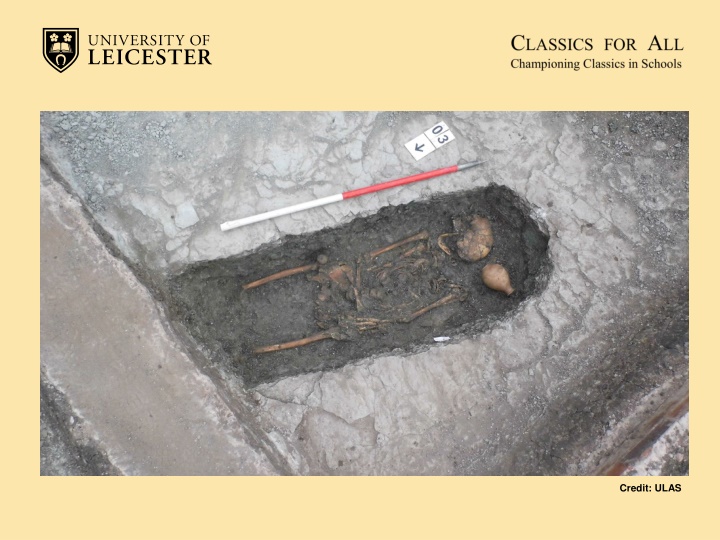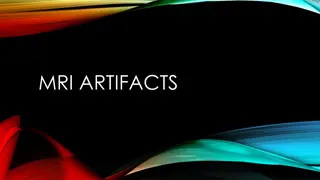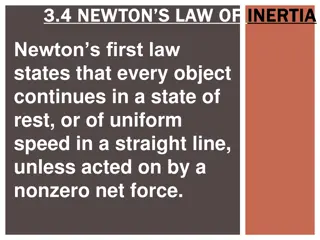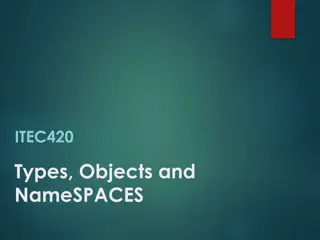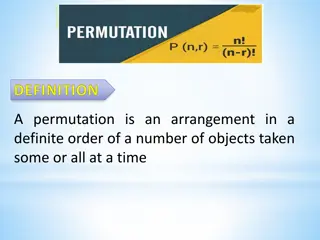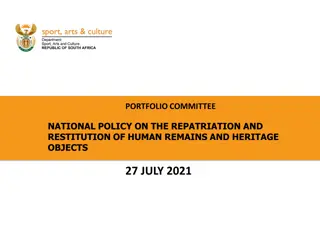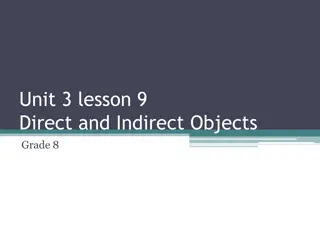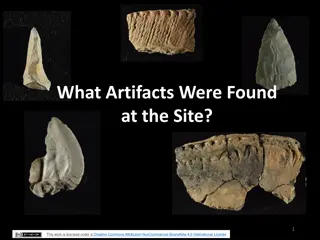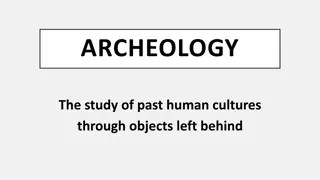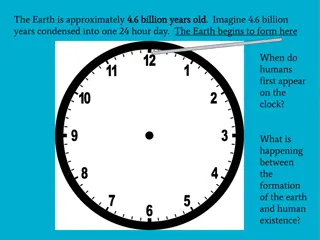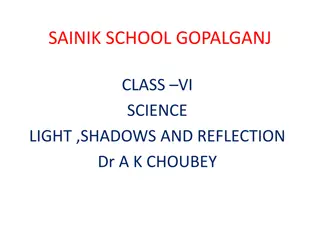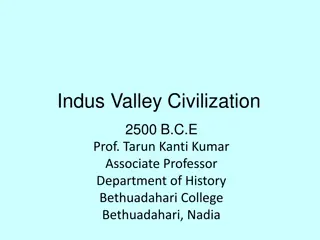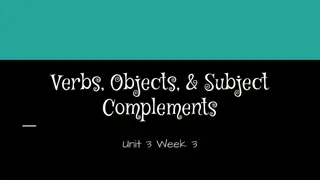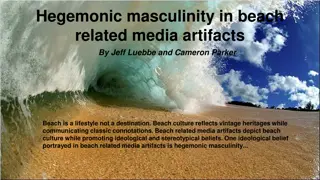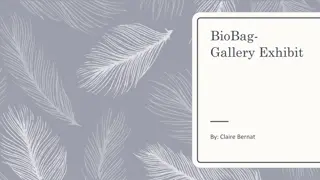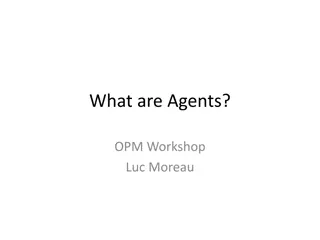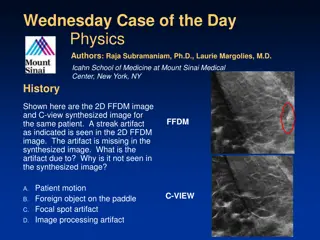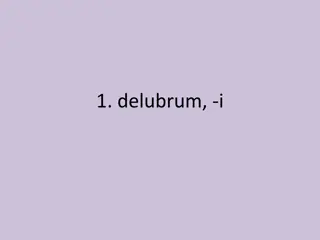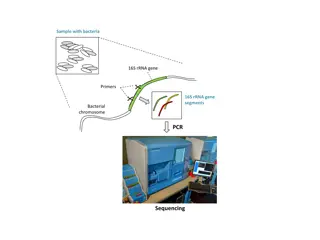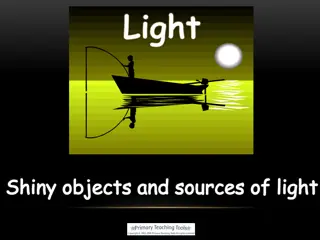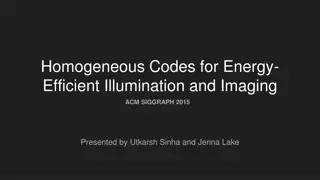Objects, Artifacts, and the Underworld: A Journey into History
Delve into the world of ancient artifacts, objects, and mythical realms through a captivating exploration of questions to ask about historical items and the mysterious Underworld. Discover insights about the makers, uses, and significance of various objects while unraveling the enigmatic realm of Dis, guarded by the formidable Charon. Let your curiosity guide you through a multidimensional journey encompassing history, culture, and mythology.
Download Presentation

Please find below an Image/Link to download the presentation.
The content on the website is provided AS IS for your information and personal use only. It may not be sold, licensed, or shared on other websites without obtaining consent from the author.If you encounter any issues during the download, it is possible that the publisher has removed the file from their server.
You are allowed to download the files provided on this website for personal or commercial use, subject to the condition that they are used lawfully. All files are the property of their respective owners.
The content on the website is provided AS IS for your information and personal use only. It may not be sold, licensed, or shared on other websites without obtaining consent from the author.
E N D
Presentation Transcript
Vine Street house home of Marcus, Servandus, Nigella and the location of the curse tablets Western Road Roman cemetery Credit: ULAS
What questions can we ask an object? What is it? How was it made? What is it called? Who made it? What is or was it used for? How was it made? Does it have more than one function? Is it hand or machine made? Does it have parts? What does it look and feel like? What does it tell you about the maker s How big is it? technical skill? What s it made of? What s its shape, smell, and sound? What colour is it? Is it complete? Has it been altered, adapted, or mended? Is it worn?
What questions can we ask an object? Does the design suit its purpose? How was it valued? Were the best materials used? What kind of value did it or does it have? How is it decorated? (to the person who made it; to the person What influenced its design and appearance? who used it) How does the object reflect the person, What can it tell us about the society in which it was community, nation or culture at the time it made? was made? When was it made? Where was it made? Where was it used? Where was it found? Who made it? Who used it? Adapted from: Adapted by the US National Park Service, Museum Management Program from the Hands on History Program, National Museum of American History, Smithsonian Institution, Washington, DC; Museum Magnet Schools, Education Resources; English Heritage, A Teacher s Guide to Learning from Objects; and the Victoria and Albert Museum education materials, London, England. https://www.nps.gov/index.htm Who owned it? How does it compare to similar items from other cultures and time periods?
Map of the Underworld Credit: http://rickriordan.com/extra/map-of-the-underworld/
Dis The Underworld Here is a vast quagmire of boiling whirlpools which belches sand and slime into the river, guarded by the terrible Charon in his filthy rags. On his chin there grow a thick grey beard, never trimmed. His glaring eyes are lit with fire and a foul cloak hangs from a knot at his shoulder. With his own hand he plies the pole and sees to the sails as he ferries the dead in a boat the colour of burnt iron. The kingdom on this side resounded with barking from the three throats of the huge monster Cerberus lying in a cave in front of them. When the priestess was close enough to see the snakes writhing on his neck, she threw him a honey cake. He opened his three jaws, each of them rabid with hunger, and snapped it up where it fell. They entered the land of joy, the lovely glades of the fortunate woods and the home of the blest. Here a broader sky clothes the plains in glowing light, and the souls have their own sun and their own stars. Some take exercise on grassy wrestling-grounds and hold athletic contests and wrestling bouts on the golden sand. Others pound the earth with dancing feet and sing their songs. These are the shades to whom Fate owes a second body. They come to the waves of the river and drink the waters of serenity and draughts of long oblivion ... so that they may go back and see the vault of Heaven again remembering nothing.
Dis Charon sum. ratem trans Stygem navigo. ratis antiquus et fractus est. donum mihi habes? nunc Stygem transimus. Cerberus canis est. Cerberus Ditem vigilat. canis ferox quod ieiunus est. Cerberus cibum vult. donum ei habes? nunc Cerberum praeterimus. tres regiones in Dite sunt. pessimi ad Tartarum eunt. optimi ad Elysium eunt. reliqui ad campos eunt. diu in campis habitas. ludum habes? nunc umbra es. umbrae in campis habitant. umbra memoriam non habet. commemorationem habes? Useful Words ratis, em: boat Styx, Stygem: River Styx donum: gift mihi: for me habeo/s/t: I/you/(s)he has nunc: now Dis, Ditem: Underworld canis, em: dog ieiunus: hungry cibus, um: food vult: wants ei: for him praterimus: we go past eunt: go reliqui: the rest campus, os, is: fields diu: for long time ludum: game umbra: shade, ghost
